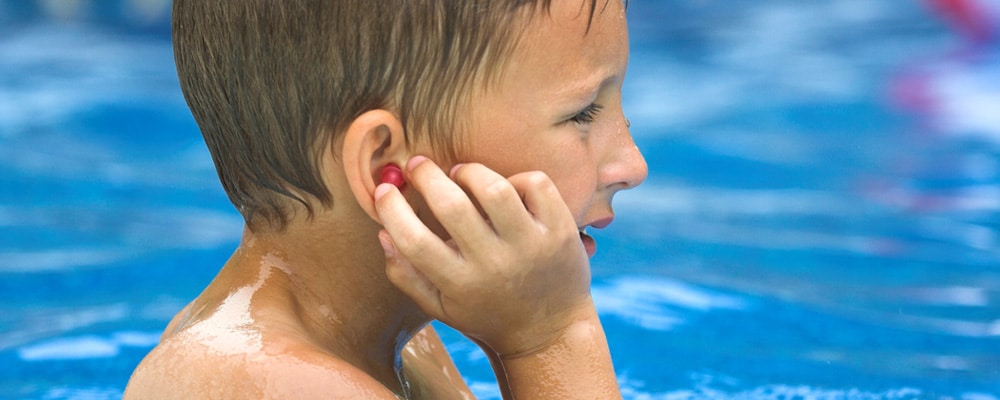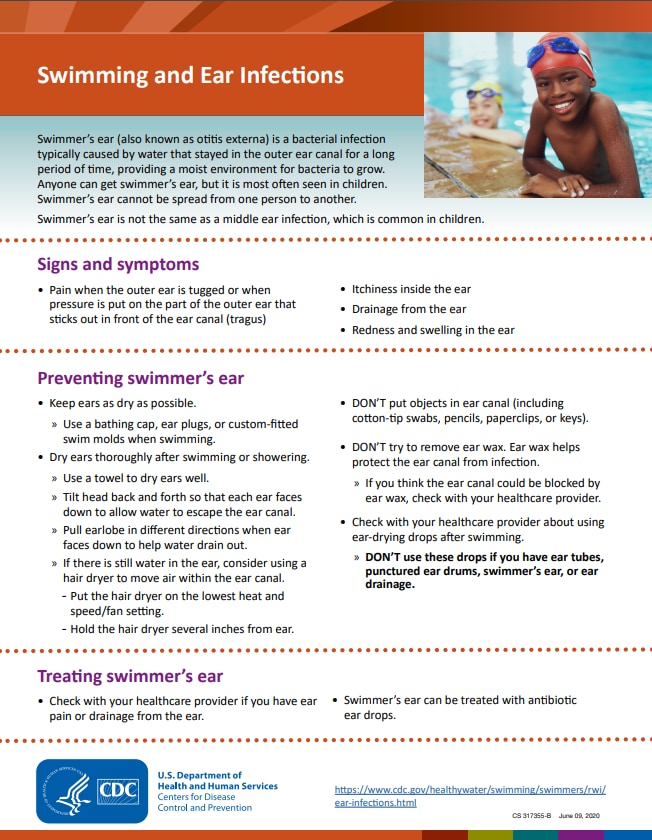Ear Infections

Swimmer’s ear (also known as otitis externa) is a bacterial infection typically caused by water that stayed in the outer ear canal for a long period of time, providing a moist environment for bacteria to grow. Anyone can get swimmer’s ear, but it is most often seen in children. Swimmer’s ear cannot be spread from one person to another.
Swimmer’s ear is not the same as a middle ear infection, which is also common in children.
Signs and symptoms
- Pain when the outer ear is tugged or when pressure is put on the part of the outer ear that sticks out in front of the ear canal (tragus)
- Itchiness inside the ear
- Drainage from the ear
- Redness and swelling in the ear
Preventing swimmer’s ear
- Keep ears as dry as possible.
- Use a bathing cap, ear plugs, or custom-fitted swim molds when swimming.
- Dry ears thoroughly after swimming or showering.
- Use a towel to dry ears well.
- Tilt head back and forth so that each ear faces down to allow water to escape the ear canal.
- Pull earlobe in different directions when ear faces down to help water drain out.
- If there is still water in the ear, consider using a hair dryer to move air within the ear canal.
- Put the hair dryer on the lowest heat and speed/fan setting.
- Hold the hair dryer several inches from ear.
- Check with your healthcare provider about using ear-drying drops after swimming.
- DON’T use these drops if you have ear tubes, punctured ear drums, swimmer’s ear, or ear drainage.
- DON’T put objects in ear canal (including cotton-tip swabs, pencils, paperclips, or keys).
- DON’T try to remove ear wax. Ear wax helps protect the ear canal from infection.
- If you think the ear canal could be blocked by ear wax, check with your healthcare provider.
Treating swimmer’s ear
- Check with your healthcare provider if you have ear pain or drainage from the ear.
- Swimmer’s ear can be treated with antibiotic ear drops.
More Information
Page last reviewed: April 2, 2022
Content source: Centers for Disease Control and Prevention
